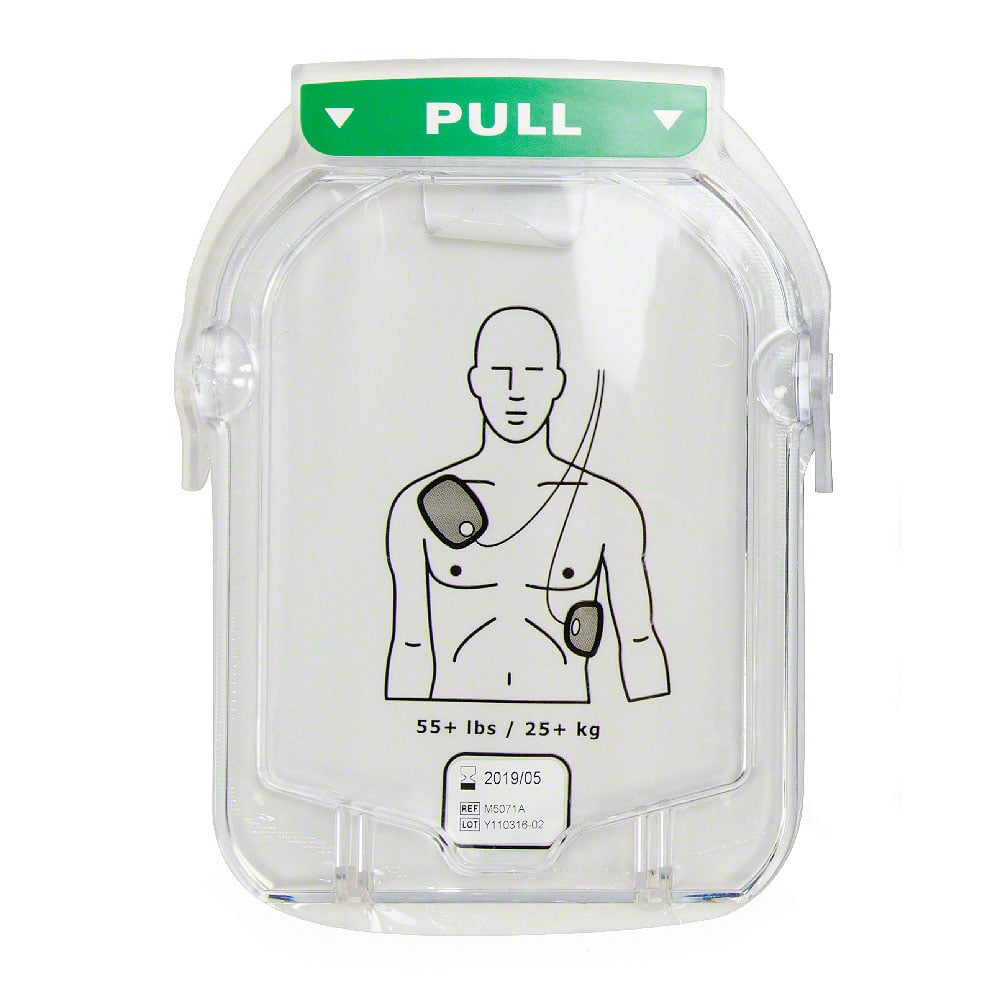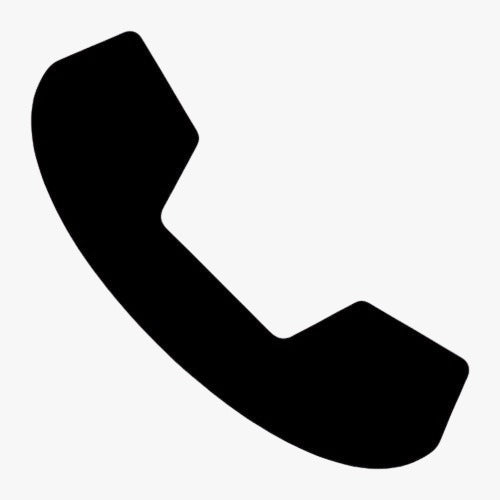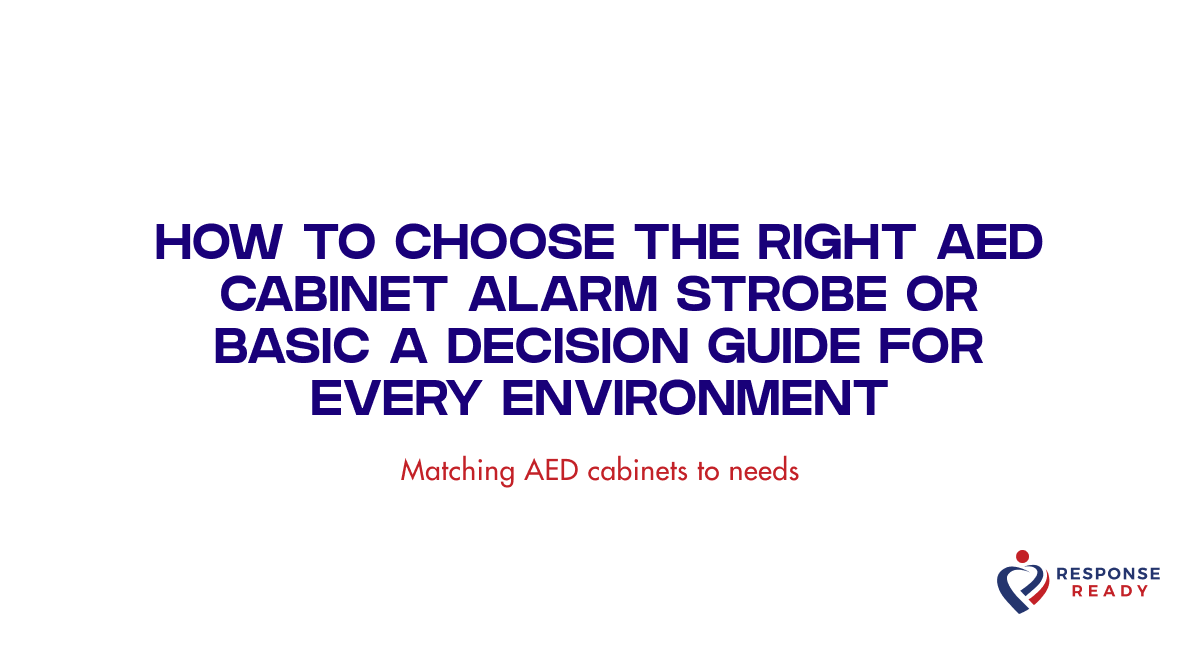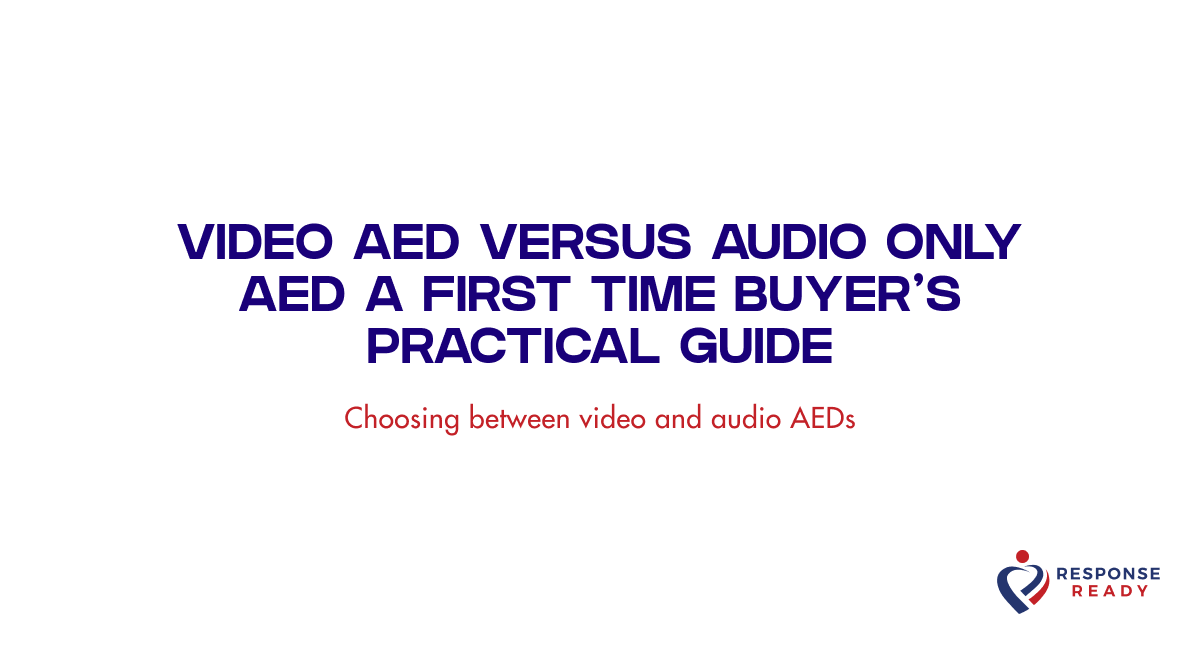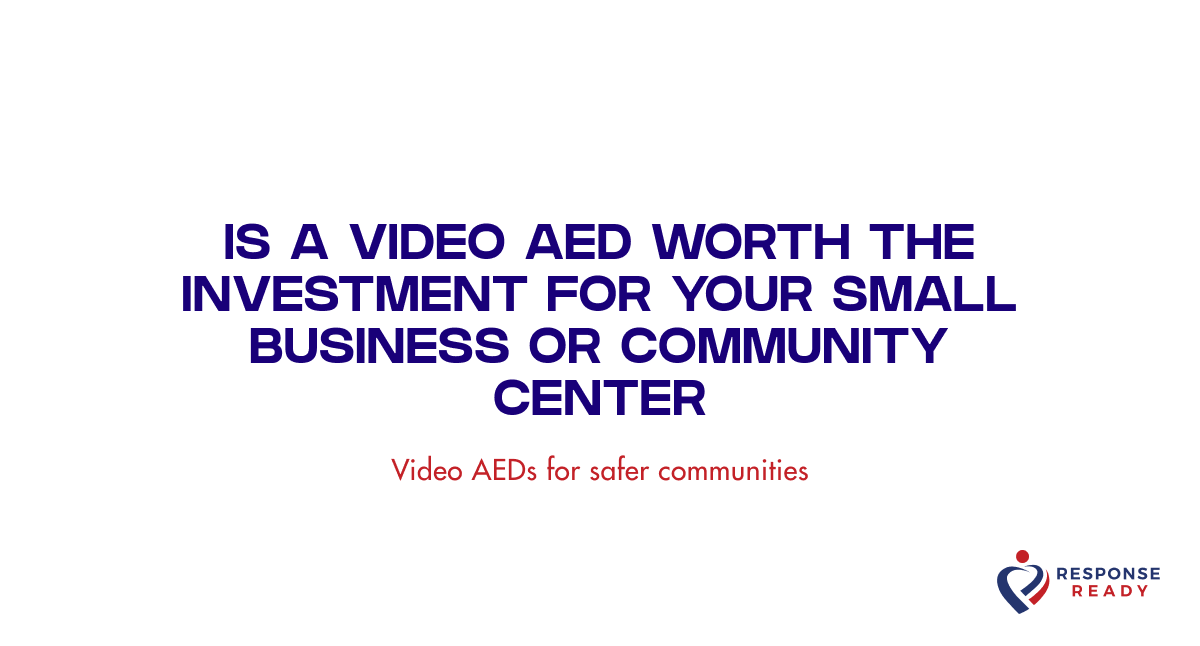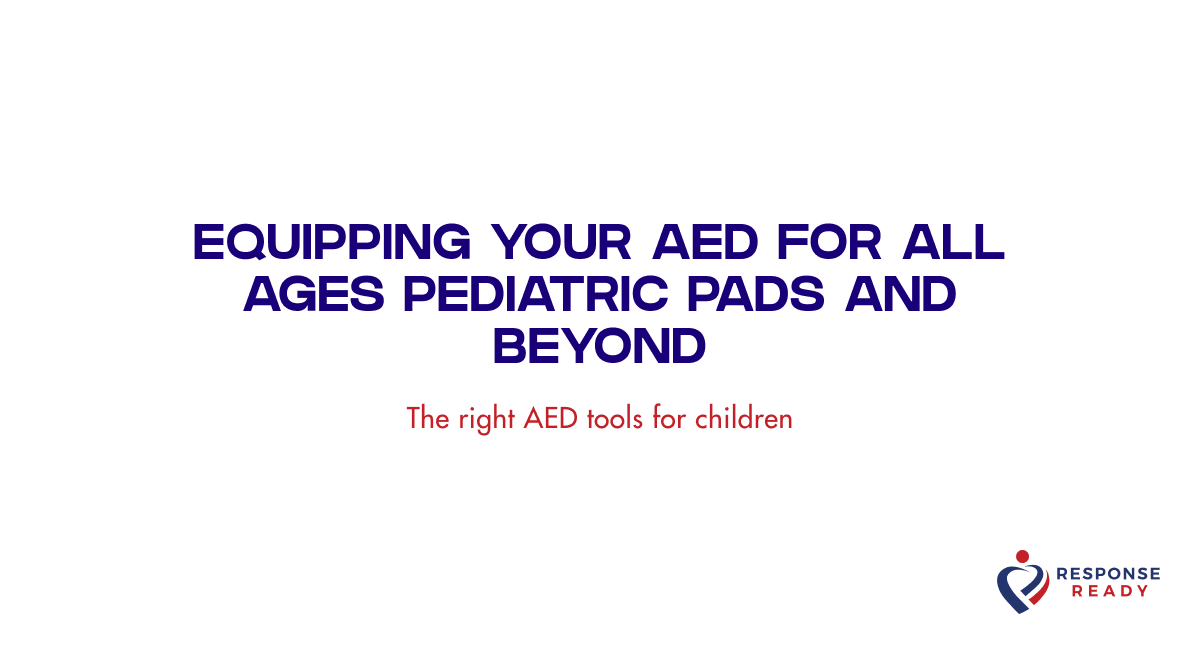When a sudden cardiac arrest occurs, the clock starts ticking. Every minute without intervention dramatically reduces the chance of survival. With nearly 7 in 10 out-of-hospital cardiac arrests happening at home, having an Automated External Defibrillator (AED) on hand transforms a moment of crisis into a moment of action. But choosing the right device can feel overwhelming. You're not just buying a product, you're investing in peace of mind and the potential to save a life.
This guide is designed to remove the guesswork. We'll walk you through a simple framework to help you select the perfect AED for your specific needs, whether you're protecting your family at home, your students at school, or your employees at your small business.
Why you can't afford to wait for help
The most critical factor in a cardiac arrest emergency is time. According to the American Heart Association, effective AED programs are built to deliver a shock within three to five minutes of collapse. While first responders are incredibly skilled, their arrival time can be unpredictable. An on-site AED empowers anyone to deliver life-saving care immediately, bridging the crucial gap until professional help arrives. Placing this power in your hands is the single most important step you can take.
The 5 key factors for choosing the right AED
Navigating the world of medical devices doesn't have to be complicated. For non-medical users, the best AED isn't the one with the most features, it's the one that's easiest to use and maintain in a high-stress situation. Here we break down the five factors that truly matter.
Ease of use
In an emergency, clarity is everything. Look for an AED with clear, calm voice prompts that guide you step-by-step through the entire process, from pad placement to delivering a shock. Some models also include visual guides or even real-time CPR feedback, coaching you on the rate and depth of chest compressions. This feature is invaluable for ensuring the user is performing effective CPR, which is a critical part of the rescue.
Total cost of ownership
The initial purchase price is only part of the story. Every AED requires ongoing maintenance, specifically replacing the AED pads and batteries which have a shelf life of two to five years. When comparing models, consider the long-term replacement costs. Some devices, like the HeartSine Samaritan, combine the battery and pads into a single cartridge, simplifying maintenance. At Response Ready, we believe in transparent pricing, so you can confidently budget for both the initial device and its future upkeep. Our value packages are designed to give you everything you need upfront at the best possible price.
Durability and portability
Where will your AED live? An AED for a climate-controlled office has different needs than one for a dusty workshop or a mobile business. Look for the device's IP (Ingress Protection) rating, which tells you how resistant it is to dust and water. A higher IP rating means greater durability in challenging environments. Additionally, consider the size and weight if you plan to move the AED frequently, such as for a sports team or an off-site event.
FDA-approval and trust
This is non-negotiable. An AED is a medical device regulated by the Food and Drug Administration (FDA). Only purchase FDA-approved devices from a reputable and established vendor. This ensures the AED has met rigorous safety and effectiveness standards. Response Ready has been a trusted provider for over a decade, exclusively offering a curated selection of leading, FDA-approved AEDs to ensure you receive a safe and reliable device.
Pediatric capability
If your AED will be in a home with children, a school, or a community center, the ability to treat a child is essential. Sudden cardiac arrest can affect people of all ages. Most AEDs offer pediatric capability through special, smaller pads that deliver a reduced electrical shock. Some models, like the Philips FRx, use a single set of pads and a pediatric "key" to switch to child mode, simplifying the process in a frantic moment.
A simple comparison of top AEDs
To make your decision easier, here’s a look at three of the most trusted and user-friendly AEDs on the market, each suited for different environments.
|
Feature |
Philips HeartStart OnSite |
ZOLL AED Plus |
HeartSine Samaritan PAD 350P |
|
Best For |
Home, Office, General Use |
Small Business, Tough Environments |
Public Spaces, Budget-Conscious |
|
Ease of Use |
Extremely intuitive voice prompts |
Real-time CPR feedback |
Simple two-button operation |
|
Durability |
IP21 |
IP55 (Very high) |
IP56 (Highest) |
|
Pediatric Option |
Separate infant/child pads |
Special pediatric pads |
Combined Pad-Pak cartridge |
|
Maintenance |
Separate battery & pads |
Separate battery & pads |
Single battery/pad cartridge |
Best overall for home and office the Philips HeartStart OnSite
If you're looking for the easiest-to-use AED for a non-medical responder, the Philips HeartStart OnSite is a top choice. It was designed specifically for laypeople and is the only AED available over-the-counter without a prescription. Its calm, clear voice instructions guide you confidently through every step. Its simplicity makes it an ideal solution for homeowners and office managers who want a device that is virtually foolproof.
Best for small businesses and tough environments the ZOLL AED Plus
For environments that demand more durability, the ZOLL AED Plus stands out. With a high IP55 rating, it withstands dust and water, making it perfect for workshops, manufacturing floors, or sports fields. Its most significant feature is Real CPR Help®, which provides live feedback to help you perform high-quality chest compressions. This added layer of guidance can make a life-or-death difference and is a key reason why many small businesses choose this model.
Best for public access and portability the HeartSine Samaritan PAD 350P
The HeartSine Samaritan PAD 350P offers a fantastic balance of performance, durability, and affordability. It boasts the highest durability rating (IP56) in a compact and lightweight design, making it easy to store and transport. Its key advantage is the innovative Pad-Pak, a single cartridge containing both the battery and electrode pads. This simplifies maintenance with just one expiration date to track, making it an excellent, low-maintenance choice for schools, churches, and community centers.
Don't forget the essentials
Once you've chosen your AED, a few key accessories will ensure it's protected, visible, and ready when needed.
-
AED Cabinets:
A visible wall cabinet not only keeps the device secure but also makes it easy to find in an emergency. Alarmed cabinets alert everyone nearby that an event is in progress. -
Carrying Cases:
If your AED needs to be portable, a dedicated carrying case protects it from damage during transport. -
Signage:
Clear signage is crucial. An AED wall sign helps people locate the device quickly, saving precious seconds. -
Training:
While modern AEDs are easy to use, proper CPR and AED training builds the confidence to act decisively.
Your next step toward preparedness
Choosing an AED is one of the most empowering decisions you can make for your home, school, or business. It’s a proactive step that prepares you to handle one of life’s most critical emergencies. By focusing on ease of use, total cost, and the specific needs of your environment, you can select a device with confidence.
If you have more questions or would like personalized guidance, our team of experts is here to help. Explore our AED superstore or call us to find the perfect solution to protect your community.
Frequently asked questions
Q: Where is the best place to put my AED?
A: Your AED should be placed in a central, visible, and easily accessible location. For a home, this might be a main living area or kitchen. In a school or business, place it near high-traffic areas like lobbies, cafeterias, or gyms, and ensure it is not locked away. The goal is to retrieve it within 90 seconds.
Q: What are the maintenance requirements for an AED?
A: Maintenance is simple but crucial. It involves regular visual inspections to ensure the device's status indicator shows it's ready, and replacing the electrode pads and batteries before they expire (typically every 2-5 years). The Response Ready App can help automate these readiness checks and reminders, making compliance effortless.
Q: Is buying an AED tax-deductible for my small business?
A: In many cases, yes. The purchase of an AED can often be classified as a business expense, making it tax-deductible. We recommend consulting with your tax professional to understand the specific implications for your business.
Q: Do I need a prescription to buy an AED?
A: Most AEDs require a prescription, which is a simple process that we handle for you at no extra cost. However, the Philips HeartStart OnSite is available for purchase without a prescription, making it an exceptionally convenient choice for home users.
Q: Can I get in trouble for using an AED on someone?
A: All 50 states have Good Samaritan laws that protect bystanders who act in good faith during an emergency. These laws are in place to encourage people to help without fear of legal repercussions. Using an AED to save a life is exactly the kind of action these laws are designed to protect.
